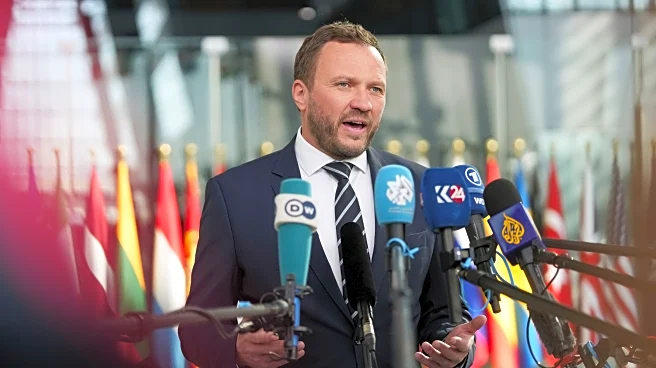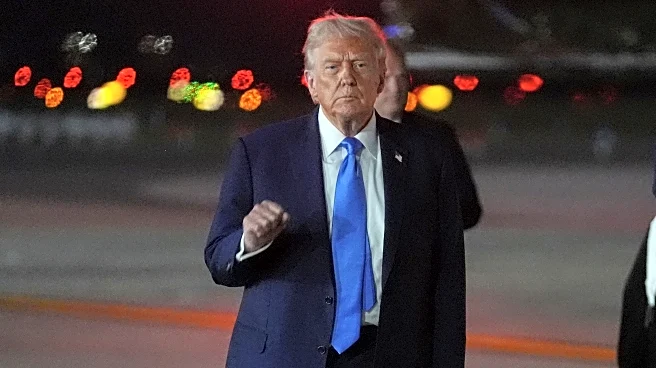What is the story about?
What's Happening?
Gold prices have reached new heights, approaching the $4,000 mark, driven by geopolitical tensions and expectations of U.S. interest rate cuts. Gold futures increased by 0.3%, reaching $3,787.80 per ounce, while the spot price hit a record high of $3,789. The surge in gold prices is attributed to its status as a safe haven during times of global economic and political uncertainty. Recent geopolitical developments, including tensions in Ukraine and the Middle East, have contributed to this trend. Additionally, warnings from NATO countries about potential actions against Russian jets have further fueled the demand for gold. Analysts suggest that the anticipation of lower interest rates and inflation risks are also influencing the gold market. Central banks are purchasing gold to diversify reserves and reduce reliance on the U.S. dollar.
Why It's Important?
The rising gold prices have significant implications for investors and global markets. As a traditional safe haven asset, gold becomes more attractive during periods of uncertainty, impacting investment strategies and portfolio allocations. The potential interest rate cuts in the U.S. could further enhance gold's appeal, as lower rates typically make non-yielding assets like gold more favorable. This trend may lead to increased demand from central banks and investors seeking to hedge against inflation and currency fluctuations. The geopolitical tensions and economic policies influencing gold prices could affect global trade dynamics and financial stability, with potential repercussions for industries reliant on gold, such as jewelry and electronics.
What's Next?
Analysts predict that gold prices could continue to rise, potentially surpassing $4,500 an ounce next year, driven by ongoing geopolitical uncertainties and monetary policy expectations. Goldman Sachs forecasts that gold could reach $3,700 by the end of 2025 and $4,000 by mid-2026. Deutsche Bank also anticipates strong demand from central banks, supporting the upward trajectory of gold prices. Investors and financial institutions will likely monitor these developments closely, adjusting strategies to capitalize on potential gains or mitigate risks associated with fluctuating gold prices.
Beyond the Headlines
The surge in gold prices highlights broader economic and geopolitical challenges, including the impact of monetary policies and international relations on global markets. The increasing demand for gold as a reserve asset reflects concerns about currency stability and inflation, prompting central banks to diversify holdings. This trend underscores the interconnectedness of global economies and the influence of geopolitical events on financial markets. As nations navigate these complexities, the role of gold as a strategic asset may evolve, influencing long-term investment and policy decisions.
AI Generated Content
Do you find this article useful?















